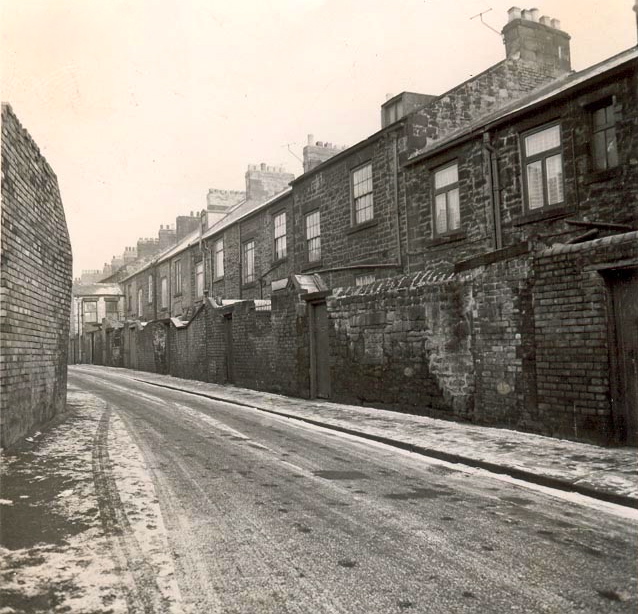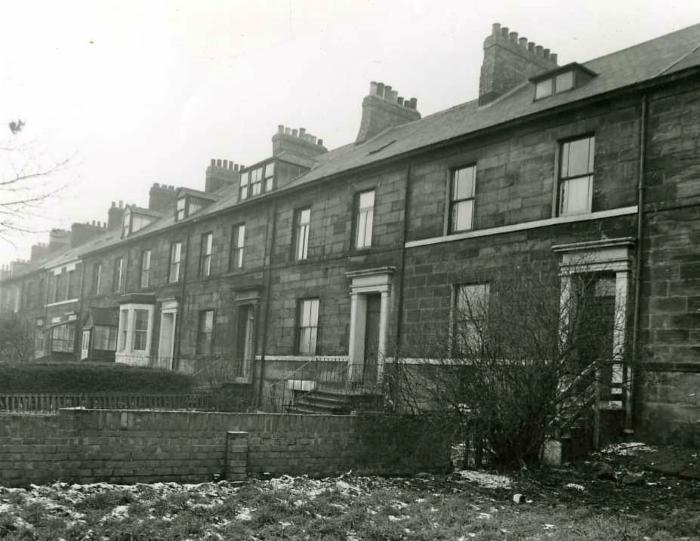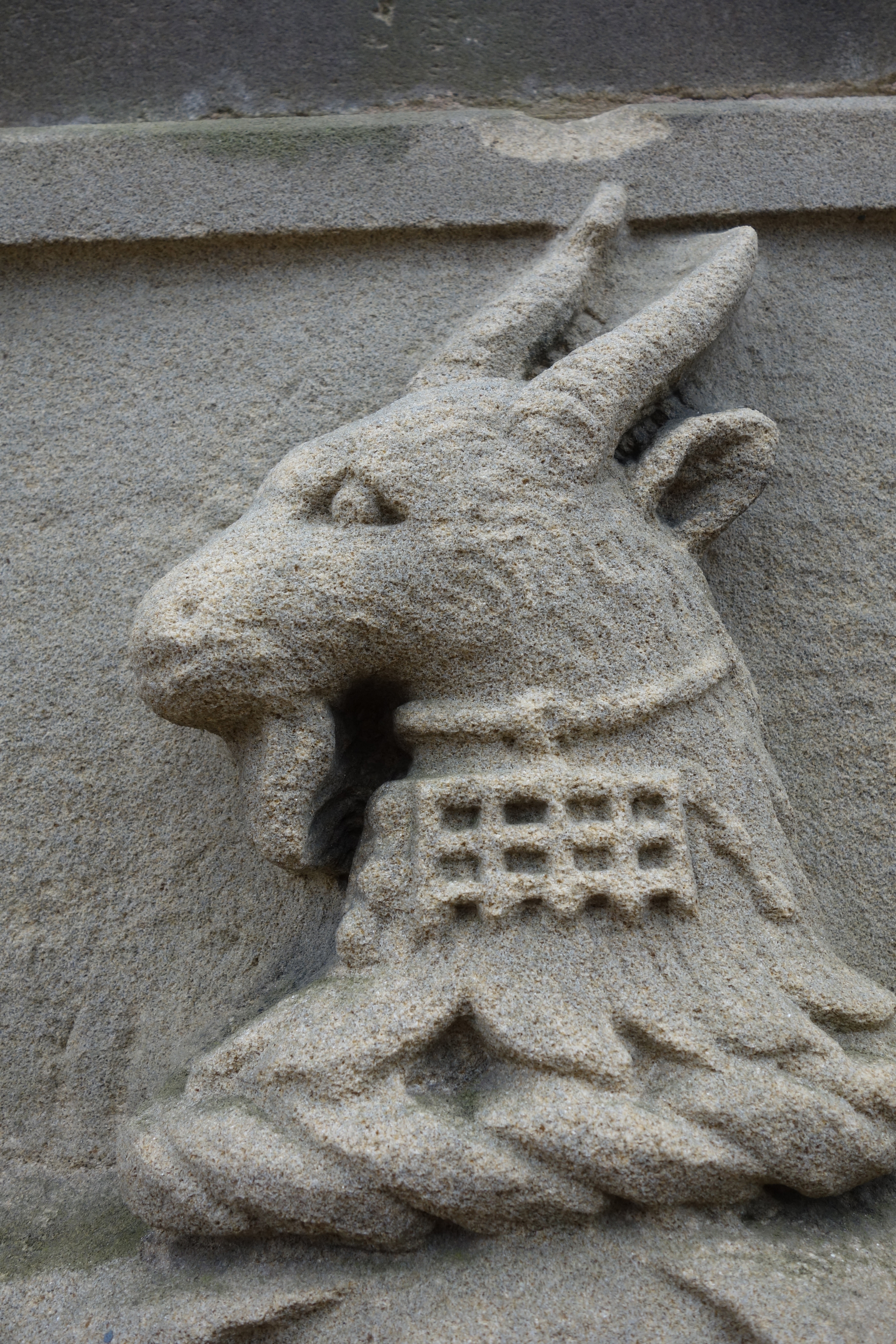
Bensham
The place name Bensham probably refers to the hill on which it stands.
Town Fields
Originally known as the common land, the Town Fields were allocated by the borough court for the benefit of inhabitants in that they could graze their livestock there. However, by the mid 17th century, this ’right of common’ had been taken over by freemen. As the freemen declined in numbers, the borough holders came to the fore. In 1807, they decided to enclose the area so that each member would have his own land. After much conflict of interest, the Enclosure Act was passed in 1814 and the fields were divided in 1818. The fields were later sold as building land.
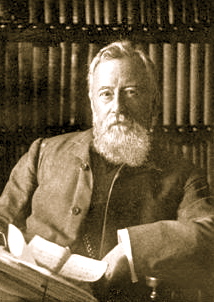
Robert Spence-Watson (1837-1911)
The son of a Newcastle solicitor, Robert Spence-Watson moved to Bensham Grove, Gateshead, in 1863. Spence Watson, who became Honorary Secretary of the Literary and Philosophical Society of Newcastle -upon-Tyne in 1871, was one of the founders of the Tyneside Sunday Lecture Society. Any educational movement could depend on Spence-Watson’s influential support. He also gained a reputation as an arbitrator, referee and conciliator in industrial disputes in the coal and iron trades as well as being an active member of the Liberal Party and became a member of the Privy Council in 1907. His wife, Elizabeth Spence-Watson, was also very active in public life, being involved in movements advocating women’s rights.
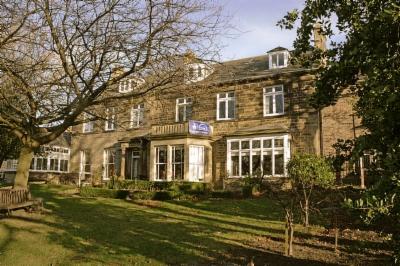
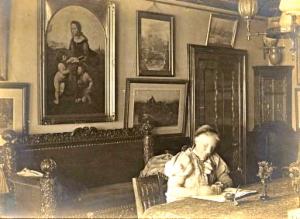 Bensham Grove Elizabeth Spence-Watson
Bensham Grove Elizabeth Spence-Watson
After Robert Spence Watson’s death in 1911, Bensham Grove grew into something of a learning district for Bensham. Bensham Settlement, established in Bensham Grove in 1919, provided a centre for educational, social and recreational activities. Activities at the settlement often included music, drama, gardening and several trade union groups met there. It became a community centre in 1948. Bensham Grove was also the site of Gateshead’s first nursery school, which opened in 1929. However, after the building was found to be unsuitable, a new school was opened in the garden of Bensham Grove in 1931.
Bensham Asylum
Established in 1799, Bensham Asylum was one of three private asylums in Gateshead to claim ’the benefits of the clean air and healthy situation of the suburbs’. Bensham Asylum expanded rapidly and the majority of pauper lunatic patients were sent there from 1836 in addition to private patients. The asylum appears to have closed between 1865 and 1868, when patients were transferred to Dunston Asylum. Part of the building still stands in Sidney Grove.
Quarrying
During the 17th and 18th centuries, Bensham’s biggest industry was quarrying. By the mid 19th century, there were six large stone quarries in Gateshead, including one on Bensham Bank, overlooking Bloomfield Terrace. Bensham Bank Quarry, like most others in Gateshead, was used for building stone and had been built over by the early 20th century.
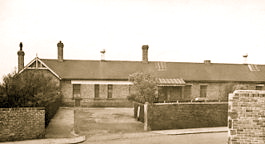
Railway Station
Bensham railway station was opened to goods and passenger service by the North Eastern Railway in 1868 and closed to passengers in 1954. Today, the route forms part of the East Coast Main Line.
Tramway
A tramway ran through Bensham between 1880 and 1950. In 1916, a disaster involving a runaway tram took place on Bensham Bank, killing four people.
The Coatsworth Picture House
Opened on Bewick Road West, Bensham, the Coatsworth provided entertainment for the Bensham area, including a children’s matinee on Saturdays. The Coatsworth closed as a cinema in 1960 and reopened as a Bingo Hall in 1962.
Town Fields
Originally known as the common land, the Town Fields were allocated by the borough court for the benefit of inhabitants in that they could graze their livestock there. However, by the mid 17th century, this ’right of common’ had been taken over by freemen. As the freemen declined in numbers, the borough holders came to the fore. In 1807, they decided to enclose the area so that each member would have his own land. After much conflict of interest, the Enclosure Act was passed in 1814 and the fields were divided in 1818. The fields were later sold as building land.

Robert Spence-Watson (1837-1911)
The son of a Newcastle solicitor, Robert Spence-Watson moved to Bensham Grove, Gateshead, in 1863. Spence Watson, who became Honorary Secretary of the Literary and Philosophical Society of Newcastle -upon-Tyne in 1871, was one of the founders of the Tyneside Sunday Lecture Society. Any educational movement could depend on Spence-Watson’s influential support. He also gained a reputation as an arbitrator, referee and conciliator in industrial disputes in the coal and iron trades as well as being an active member of the Liberal Party and became a member of the Privy Council in 1907. His wife, Elizabeth Spence-Watson, was also very active in public life, being involved in movements advocating women’s rights.

 Bensham Grove Elizabeth Spence-Watson
Bensham Grove Elizabeth Spence-WatsonAfter Robert Spence Watson’s death in 1911, Bensham Grove grew into something of a learning district for Bensham. Bensham Settlement, established in Bensham Grove in 1919, provided a centre for educational, social and recreational activities. Activities at the settlement often included music, drama, gardening and several trade union groups met there. It became a community centre in 1948. Bensham Grove was also the site of Gateshead’s first nursery school, which opened in 1929. However, after the building was found to be unsuitable, a new school was opened in the garden of Bensham Grove in 1931.
Bensham Asylum
Established in 1799, Bensham Asylum was one of three private asylums in Gateshead to claim ’the benefits of the clean air and healthy situation of the suburbs’. Bensham Asylum expanded rapidly and the majority of pauper lunatic patients were sent there from 1836 in addition to private patients. The asylum appears to have closed between 1865 and 1868, when patients were transferred to Dunston Asylum. Part of the building still stands in Sidney Grove.
Quarrying
During the 17th and 18th centuries, Bensham’s biggest industry was quarrying. By the mid 19th century, there were six large stone quarries in Gateshead, including one on Bensham Bank, overlooking Bloomfield Terrace. Bensham Bank Quarry, like most others in Gateshead, was used for building stone and had been built over by the early 20th century.

Railway Station
Bensham railway station was opened to goods and passenger service by the North Eastern Railway in 1868 and closed to passengers in 1954. Today, the route forms part of the East Coast Main Line.
Tramway
A tramway ran through Bensham between 1880 and 1950. In 1916, a disaster involving a runaway tram took place on Bensham Bank, killing four people.
The Coatsworth Picture House
Opened on Bewick Road West, Bensham, the Coatsworth provided entertainment for the Bensham area, including a children’s matinee on Saturdays. The Coatsworth closed as a cinema in 1960 and reopened as a Bingo Hall in 1962.
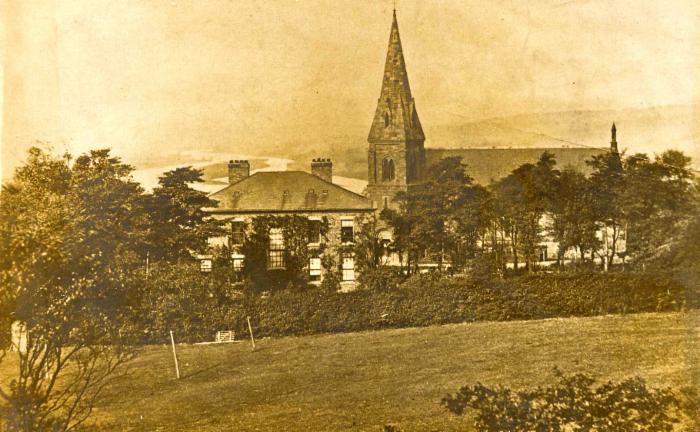 What a magnificent pic to represent beautiful Bensham in about 1880. This is the back of Cotfield House and the background is the River Tyne island, Kings Meadow
What a magnificent pic to represent beautiful Bensham in about 1880. This is the back of Cotfield House and the background is the River Tyne island, Kings Meadow
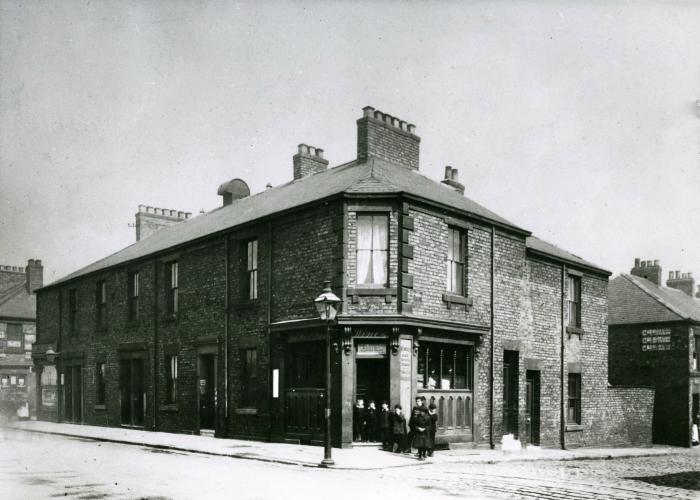 Beehive Inn Public House,
Beehive Inn Public House,
Corner of Prince Consort Road-Arthur Street,
1920
One of the first pubs to have a billiard table per I.C. Carlton. It doesn't look big enough
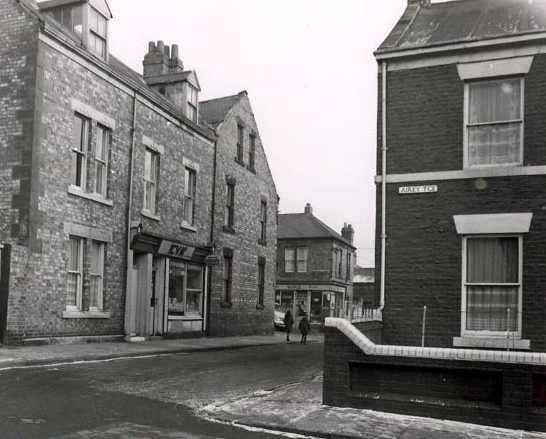
Airey Terrace, Bensham, Gateshead
Date: Date Unknown
iSee Gateshead Old Pictures Ref: GL002369
This terrace was situated off Rectory Road between Bensam Bank and Bewick Road. New housing is now on this site.
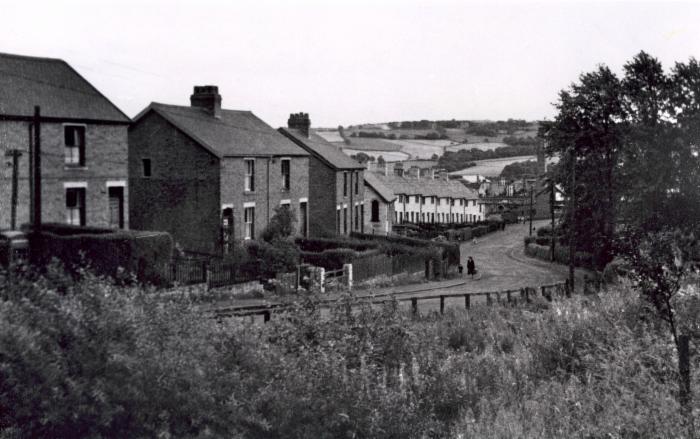
Alston Street, Bensham
Photographer: Elrington, W.P.
Date: Date Unknown
iSee Gateshead Old Pictures Ref: LS000358
Image taken looking north east up Alston Street.
Advertisement

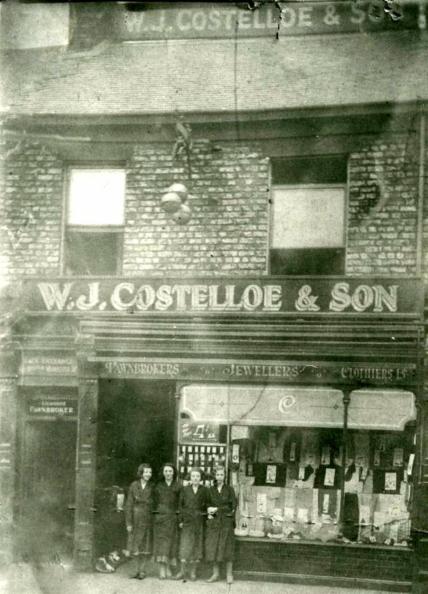
W J Costelloe Ltd,
Prince Consort Road,
1921
The richer people moved away from the town centre to Low Fell and Bensham where select houses such as Claremont Place (1819-24) were built.
Claremont Place was the first substantial terrace to be built in Bensham. It was built in phases between 1819 and 1824 on land belonging to William Hymers, a local iron master (Taylor & Lovie, 2004). It is now a conservation area and listed as grade II.
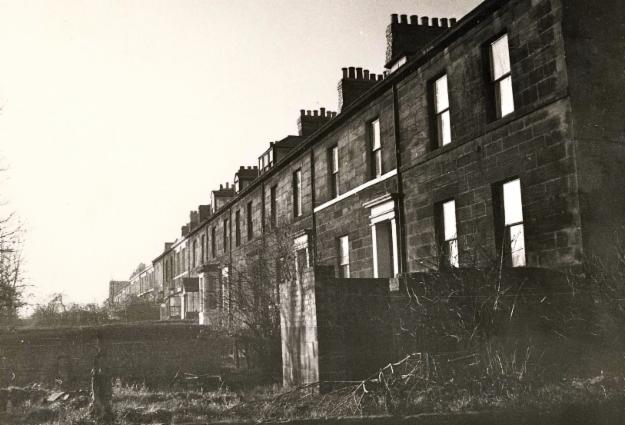
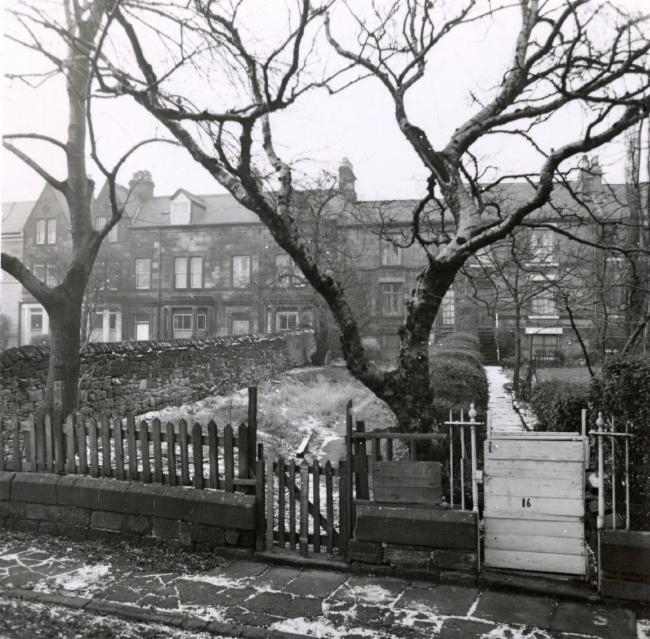
Claremont Place, Off Coatsworth Road, Gateshead
Photographer: Unknown
Date: Date Unknown
Reference Number: GL002808
Then
Were those trees planted for privacy?
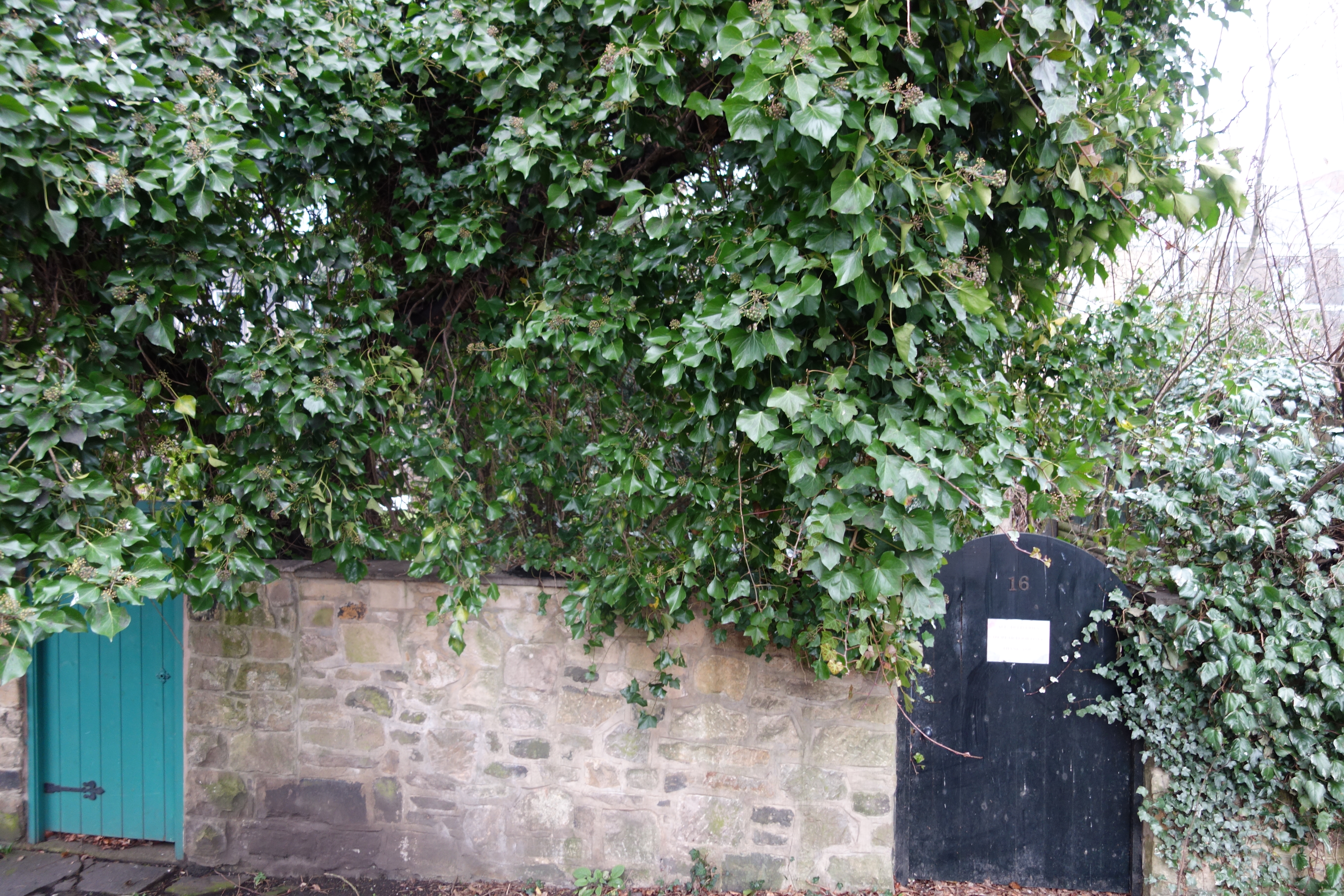
Now
Privacy was got
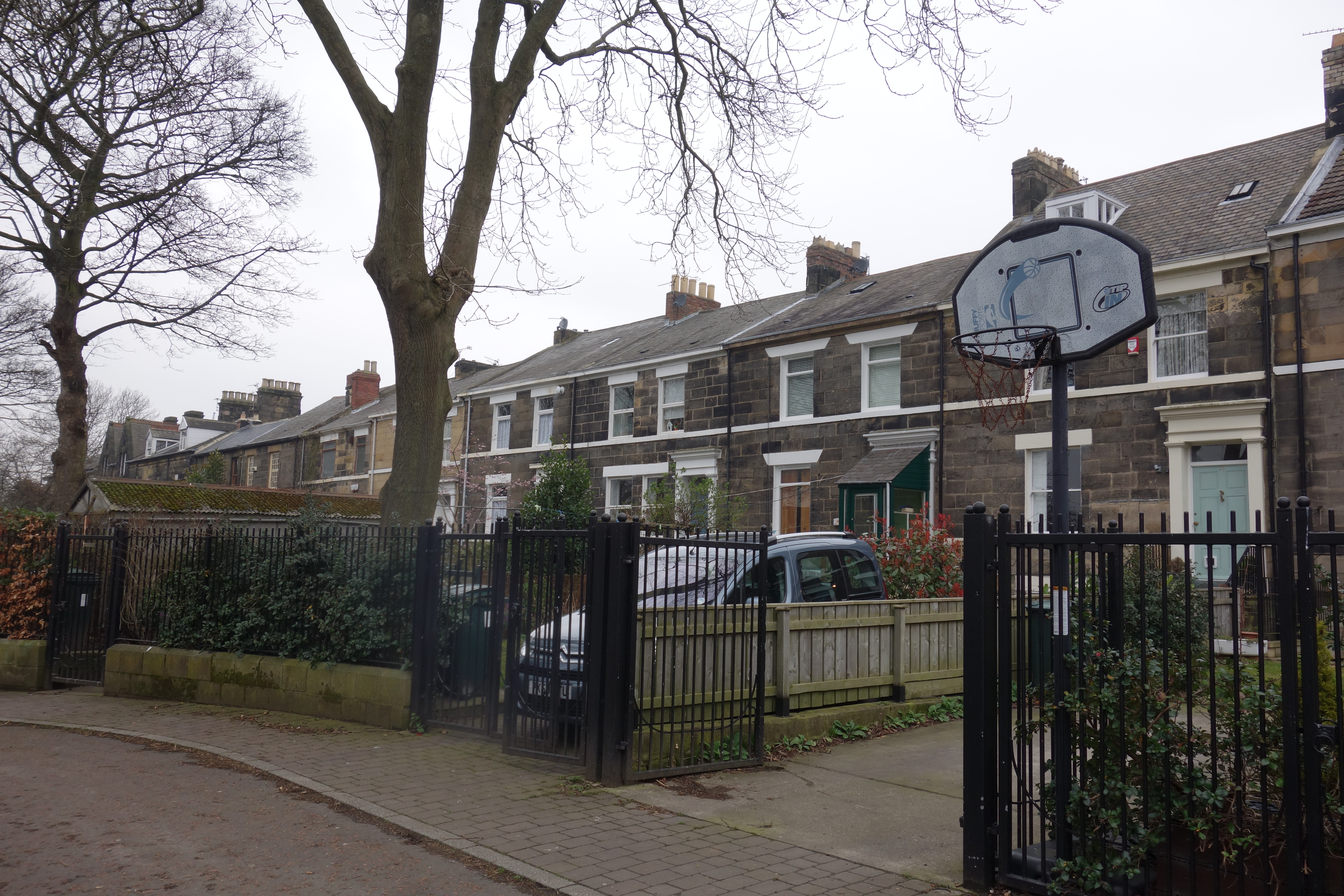
March 2015
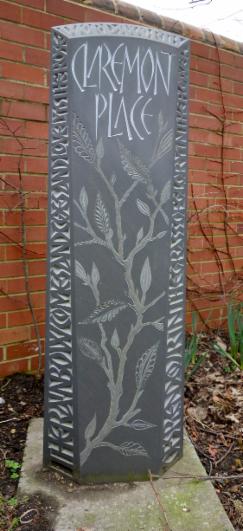
Claremont Place. Why this is here I know not. Down each side it has William Wordsworth quotes
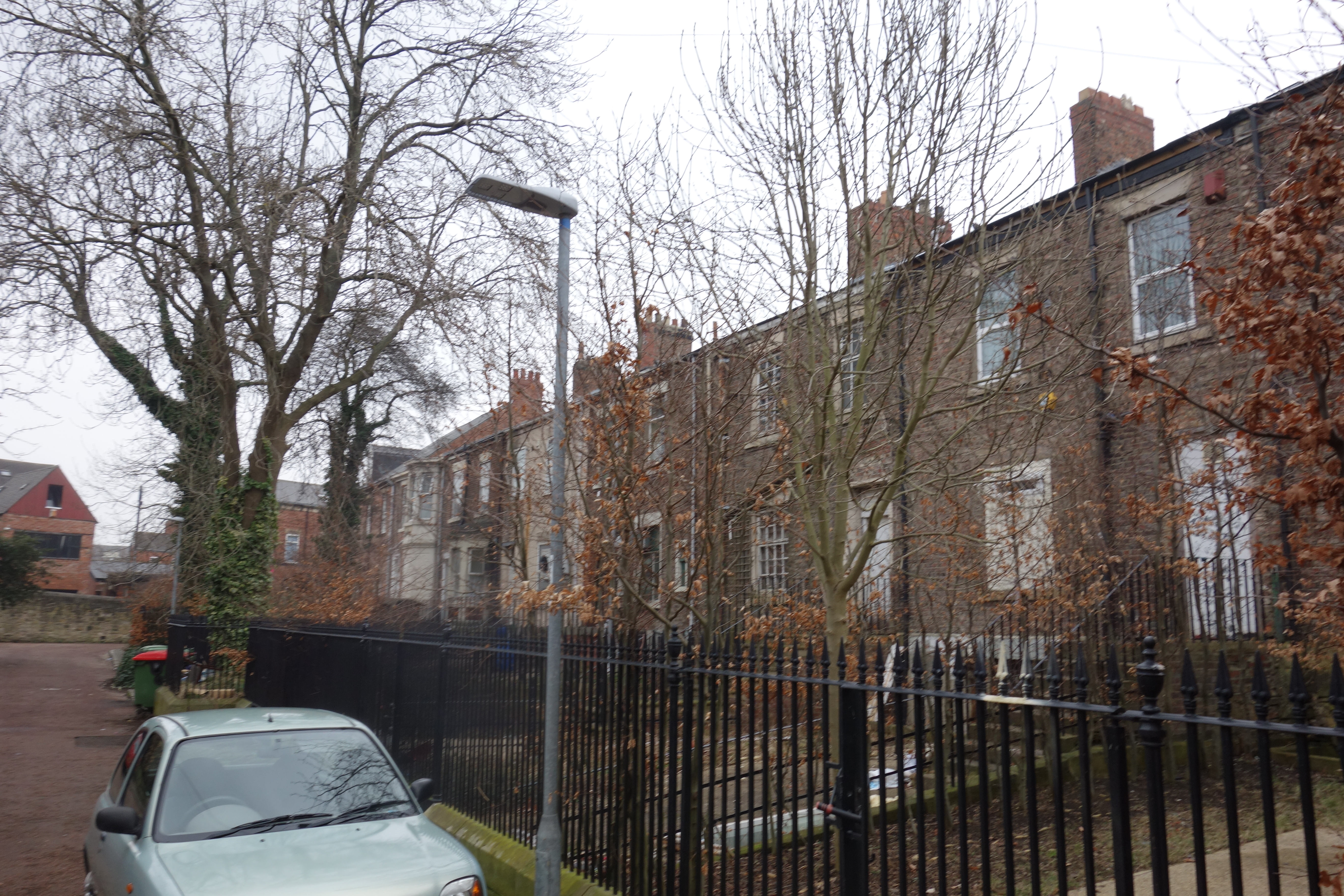
Sedgewick Place March 2015
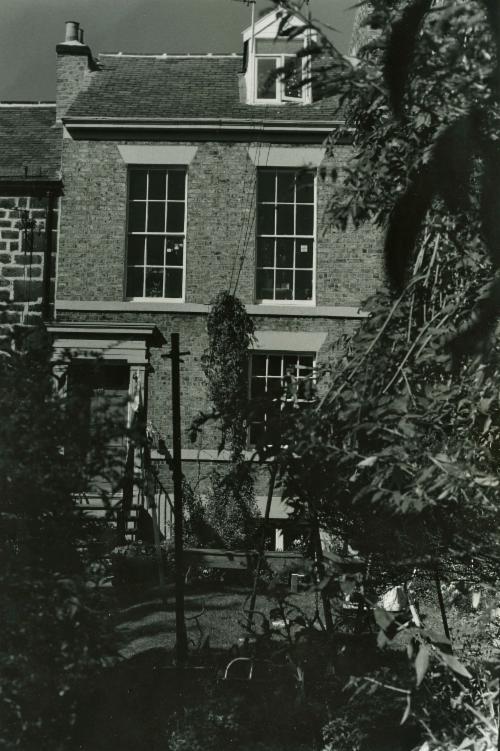
15 Woodbine Terrace, Bensham
There is now a blue plaque
Reference Number: LS000041
William Booth came with his wife Catherine to Gateshead in 1858 where he was appointed minister to the Gateshead Methodist circuit. His preaching at the Bethedsa Chapel was "immediately successful" and it was not uncommon for 2,000 people to fill the chapel and hear him preach. He left Gateshead for London in 1861 and in 1865 the Booths founded
The Salvation Army
PHOTO to be added
St. Cuthbert’s Church
During the 1830s and 1840s, Bensham was steadily increasing in population and was without church provision. In 1846, the Askew family, owners of the Redheugh Estate, started selling land at nominal prices for church sites. The Foundation stone of St. Cuthbert’s, built as a Chapel of Ease to St. Mary, was laid in July 1846. Its architect was John Dobson. The final cost, all of which was raised through public subscription, totalled £2,000.
Bensham photos and info brought to you by

The Felling Heritage Group
Date: Date Unknown
iSee Gateshead Old Pictures Ref: GL002369
This terrace was situated off Rectory Road between Bensam Bank and Bewick Road. New housing is now on this site.

Alston Street, Bensham
Photographer: Elrington, W.P.
Date: Date Unknown
iSee Gateshead Old Pictures Ref: LS000358
Image taken looking north east up Alston Street.
Advertisement


W J Costelloe Ltd,
Prince Consort Road,
1921
The richer people moved away from the town centre to Low Fell and Bensham where select houses such as Claremont Place (1819-24) were built.
Claremont Place was the first substantial terrace to be built in Bensham. It was built in phases between 1819 and 1824 on land belonging to William Hymers, a local iron master (Taylor & Lovie, 2004). It is now a conservation area and listed as grade II.


Claremont Place, Off Coatsworth Road, Gateshead
Photographer: Unknown
Date: Date Unknown
Reference Number: GL002808
Then
Were those trees planted for privacy?
Now
Privacy was got
March 2015

Claremont Place. Why this is here I know not. Down each side it has William Wordsworth quotes
Left: The Rainbow comes and goes, And lovely is the Rose,
Right: Of splendour in the grass,
of glory in the flower;
Claremont Place Back Lane, Gateshead Photographer: Unknown
Date: 1970
Reference Number: GL002883
Sedgewick Place, Bensham, 1960s Photographer: Unknown
Date: 1960s
Reference Number: GL005391
Sedgwick Place was one of the first terraces in Bensham to be built, tho somewhat after Claremont Place.
It was completed by 1836 along with Ravensworth Terrace, Claremont Place and Woodbine Street. These were mainly occupied
by Gateshead tradesmen whilst larger villages and cottages were erected from the 1820s onwards by merchants and
professionals eager to escape the squalor of the town centre.
Sedgewick Place March 2015

15 Woodbine Terrace, Bensham
There is now a blue plaque
Reference Number: LS000041
William Booth came with his wife Catherine to Gateshead in 1858 where he was appointed minister to the Gateshead Methodist circuit. His preaching at the Bethedsa Chapel was "immediately successful" and it was not uncommon for 2,000 people to fill the chapel and hear him preach. He left Gateshead for London in 1861 and in 1865 the Booths founded
The Salvation Army
PHOTO to be added
St. Cuthbert’s Church
During the 1830s and 1840s, Bensham was steadily increasing in population and was without church provision. In 1846, the Askew family, owners of the Redheugh Estate, started selling land at nominal prices for church sites. The Foundation stone of St. Cuthbert’s, built as a Chapel of Ease to St. Mary, was laid in July 1846. Its architect was John Dobson. The final cost, all of which was raised through public subscription, totalled £2,000.
Bensham photos and info brought to you by
The Felling Heritage Group
